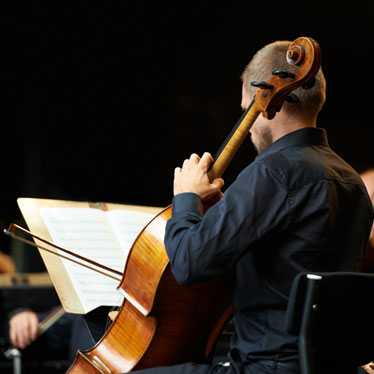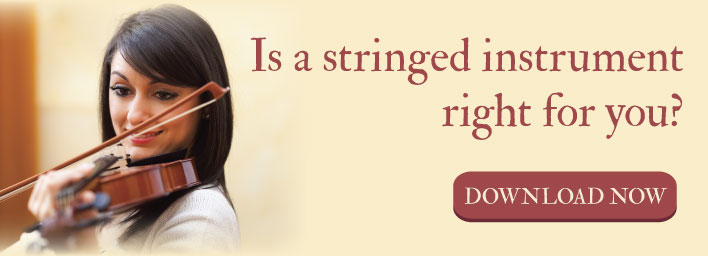How To Conquer Playing A Symphonic Score

As a beginning and intermediate string musician, you've spent the majority of your time looking at a single part of music - yours! Meanwhile, the conductor (or your instructor) and the pianist had a full score - meaning all of the written parts of the whole on a single page.
Advanced string players and music students begin to work with full, symphonic scores. While daunting at first, understanding how to read - and conquer - a symphonic score makes you a more knowledgeable and well-rounded student, especially if you plan to graduate with a music degree or direct/conduct someday.
Here are the steps to mastering a symphonic score.
Think about orchestras from a big picture perspective
As the conductor of an orchestra, you work from the big picture view all of the time. Standing on your box, from left-to-right, you direct up to 90+ musicians, arced in front of you in a semi-circle. If you were the center of a clock face:
- From 9 to 10 o'clock are 1st and 2nd violins
- From 10 to 2 o'clock are five rings, front to back, that include the violas, flutes and. oboes, clarinets and bassoons, french horns, trumpets, trombones and tubas, and percussionists comprise the final ring.
- From 2 to 3 o'clock are the cellos, with the double basses sitting or standing behind them
This order is the orchestral standard for a reason, making it easier for conductors to do their work with respect to the score, keeping things consistent in orchestras all around the world.
Eat, breathe and sleep the score
Get yourself a high-quality recording of the piece, played by a professional symphony. Play it over and over again - sometimes while reading the music part-by-part and other times to help your conscious and subconscious mind absorb the piece in its entirety.
By living the music, it will become a part of you at a core level. Before you know it, your brain will be able to isolate specific lines of the music without looking at it or listening to it. It's as if it's playing inside your head - making it easier for you to work with the musicians and create your ideas about how the piece should be played and expressed.
Note: Once you learn more about reading the score, pretend you're conducting the recorded orchestra - a great way to practice reading individual parts with sound. You can also watch YouTube videos of orchestral practices. Grabbing a copy of the score, and paying attention to the recorded rehearsal, is a smart way to practice with the music.
Memorize the Score Order
Like the standard orchestral seating assignments, orchestral scores are always written in the same instrument order. The quicker you learn and memorize the order, the easier it is to conduct each section - or system - as you move through the piece.
Instruments are listed in the same order
The order of the instruments is as follows, always listed from high to low:
- Woodwinds
- Brass
- Percussion
- Harp (if there is one)
- Strings
The instruments are listed to the left of the stave. Often, they have a number in front (2 Oboe), and this indicates there should be two of those instruments/musicians. There may also be a Roman numeral (I, II, III, etc.) afterward, meaning there are two or more staves assigned to that instrument.
The instrument names are only written in their entirety on the first page of the score. After that, they're abbreviated. So, again, memorizing the order is essential to becoming efficient at conducting the work.
Instrument families are bracketed
The families of instruments are grouped with a bold, square bracket ( [ ) on the left. So, for example, Violin 1, Violin 2, Viola, Cello & Bass are all bracketed together.
Like instruments are braced
Multiple staves of the same instrument (Violin 1 and Violin 2, for example) are connected on the left with a brace ( { ).
Get Familiar with French, German and Italian Instrument Names
Unless you're learning a score form an American or British composer, the instruments are written in the language of the composer - typically French, German or Italian. Becoming familiar with the instrument names in these languages allows you to be fluent - lessening the confusion of having to repeatedly translate what's what.
Similarly, musical notations are written in the native tongue of the composer, a reason why many professional classical musicians and conductors speak more than one musical language.
Identify systems & tramlines
Throughout the score, staves played simultaneously are connected by a single, horizontal line at the left. These are called "systems." The various systems are divided by a symbol, called a tram line ( // ), written at the bottom left at the beginning of the next system. Tramlines are easy to miss so mark them well.
Get friends together to practice
Now that you've familiarized yourself with the score, organize some friends.


